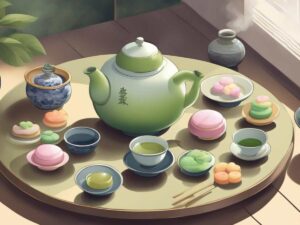Making mochi is an activity that can be enjoyed by young and old. The best thing about making these delicious treats is eating them afterwards!
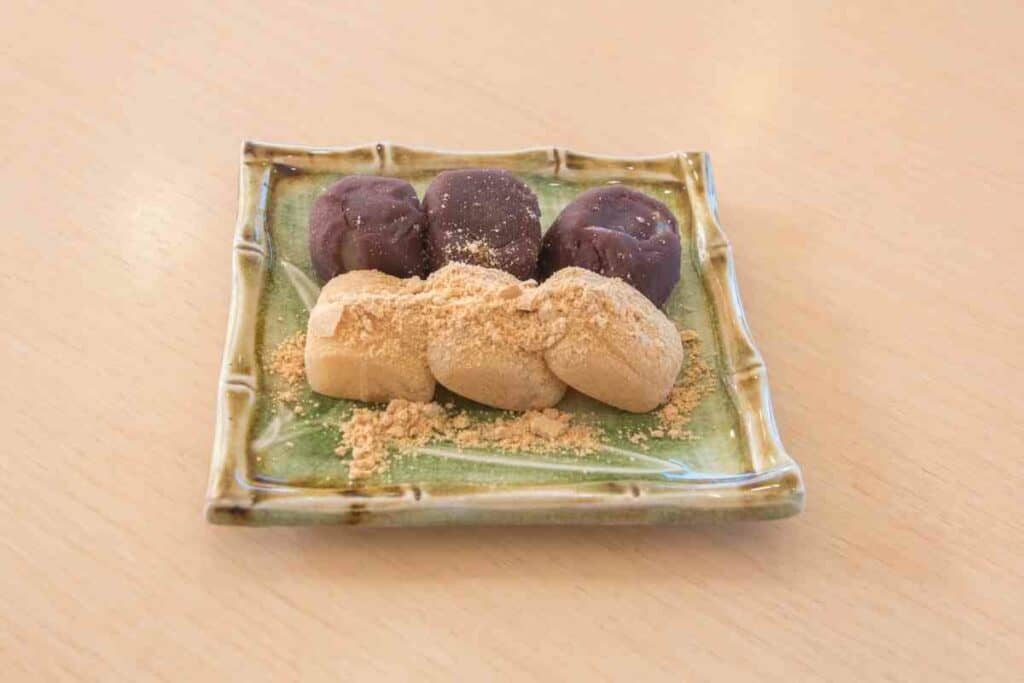
You can make mochi using tapioca flour, but is this the best type to use?
Let’s find out.
Table of Contents
How Is Tapioca Flour Made?
This gluten-free ingredient is ideal for those who suffer with allergies from foods such as nuts and grains.
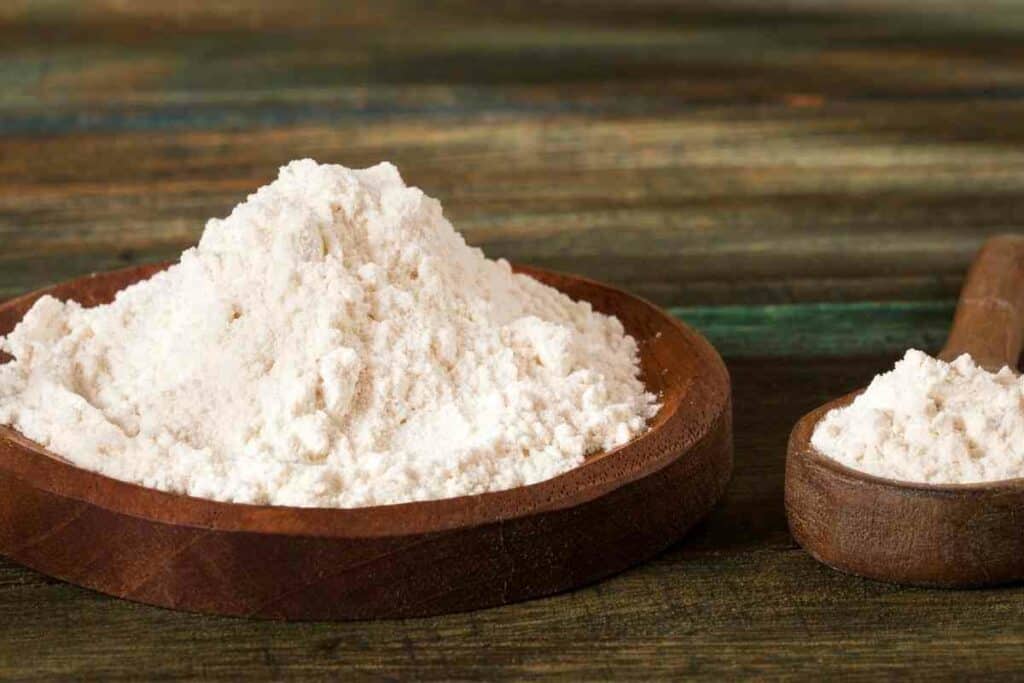
Tasteless and odorless, this type of flour is perfect when used in baking recipes if you want to achieve a light, fluffy center, or a crispy crust.
So how is it made?
Tapioca flour is a product of the cassava root, a starchy vegetable that can be found in South America, West Africa and South-East Asia.
Firstly, the root is finely shredded before it is washed and dehydrated. The leftover dried pulp is then ground into flour.
When Is Mochi Eaten?
This popular Japanese dish is available in most grocery stores as well as restaurants and food stalls.
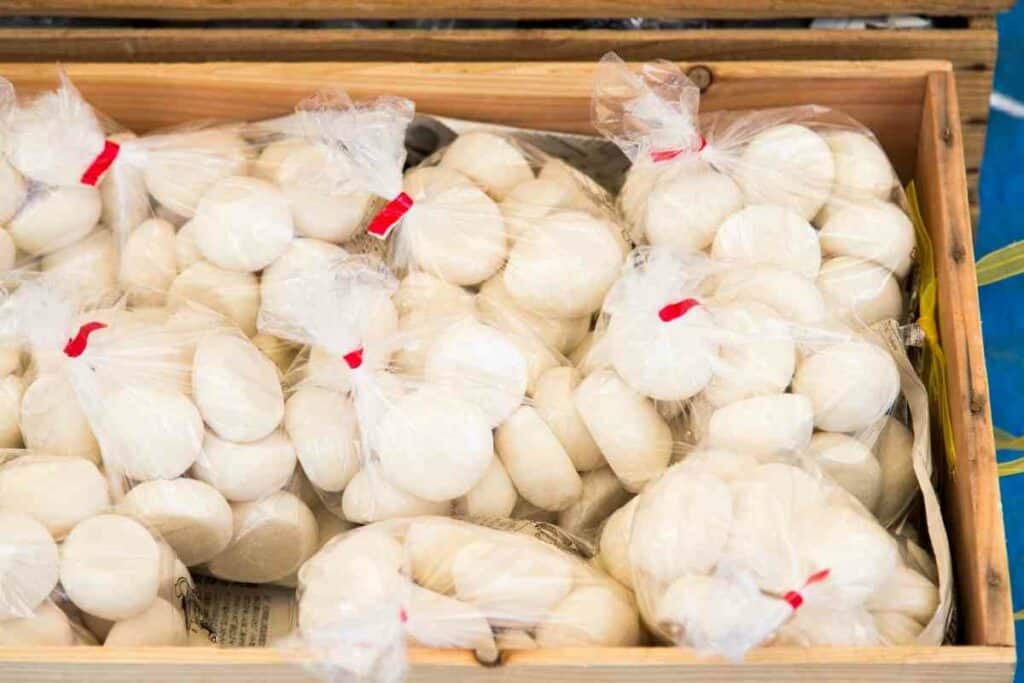
It can be added to savory dishes such as the hearty vegetable soup known as ozouni. Apart from this, it is widely enjoyed as a sweet snack.
You will often see these delicious rice balls served at celebratory festivals.
Throughout the cherry blossom season, mochi is served with a hint of pink to symbolize the blooming flowers.
The New Year period is probably the time of year when this treat is enjoyed the most. While many meals are served during this holiday, mochi is definitely the main contender.
Is It Vegetarian?
Yes!
We would even go as far as saying it is vegan-friendly too. However, this depends on what kind of toppings you have yours with.
This sweet treat is made using glutinous rice with a filling.
Popular choices include red bean or matcha paste. They are topped off with brown sugar or kinako.
Why Is Mochi Dangerous?
Believe it or not, these delicious rice bites have a high mortality rate.
This is to do with the balls themselves getting stuck when traveling from the mouth to the stomach.
In December 2021, four women died from choking on mochi during New Year’s celebrations.
These kinds of unfortunate incidents are so popular that the Japanese police created a website to educate people on how to help someone in such a situation.
Top tips include breaking it into small pieces and chewing slowly.
Different Kinds Of Mochi
Let’s take a look at how versatile these bite-sized treats can be.
Warabi
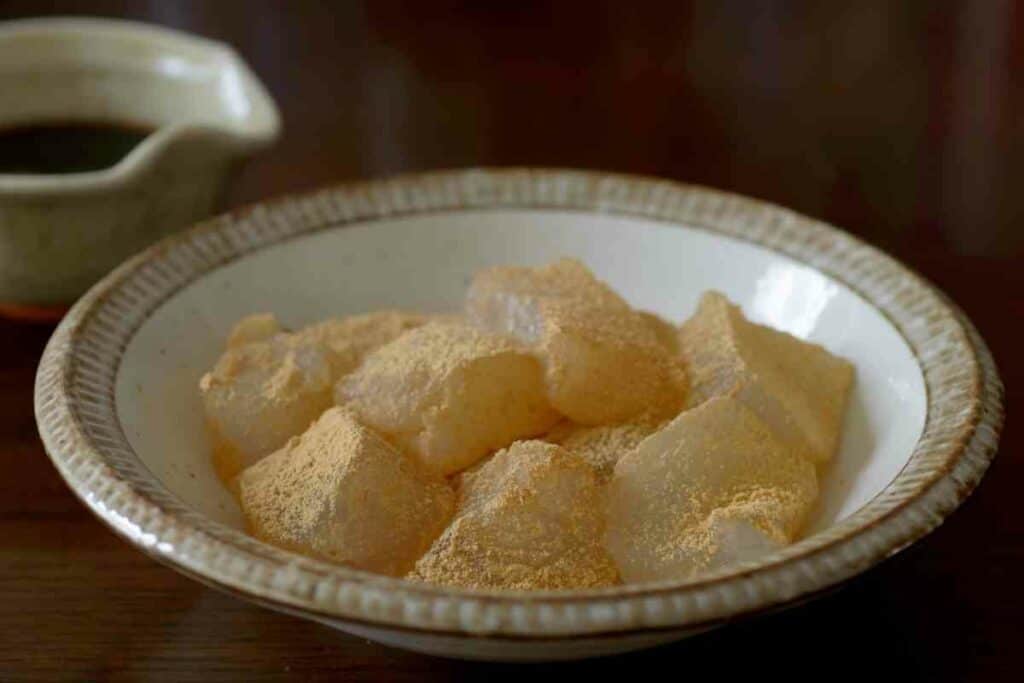
Made using warabi starch, this type of mochi is soft and jelly-like in its consistency. It is most popular in western Japan.
Sakura
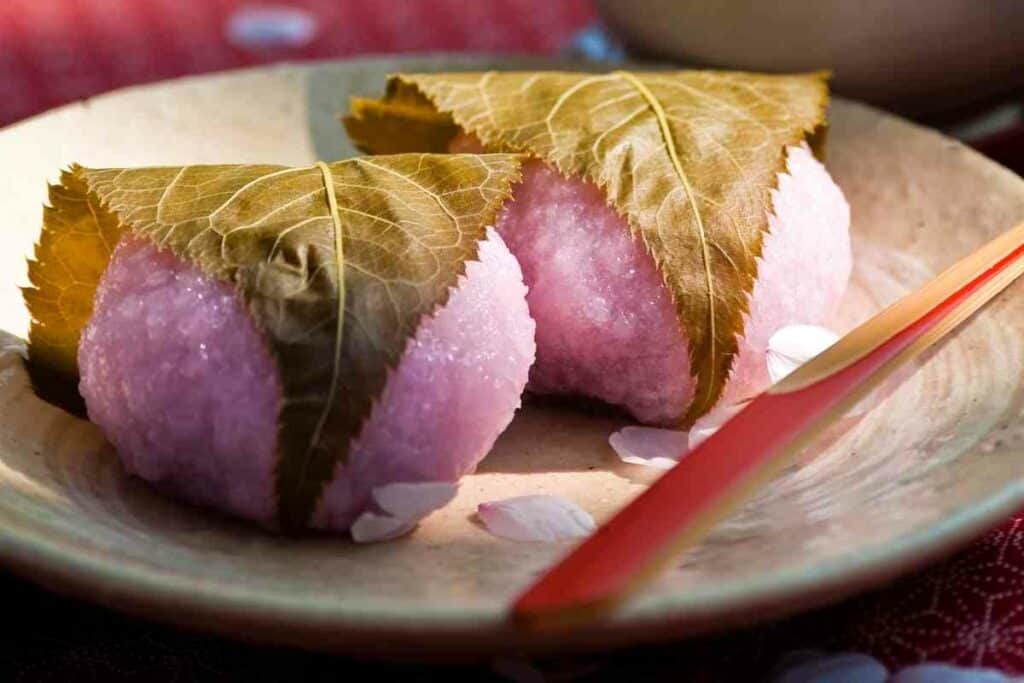
This is usually served along with a Sakura leaf to celebrate cherry blossom season. It is made using whole grain rice and has a lumpier texture when compared to others.
Kuzumochi
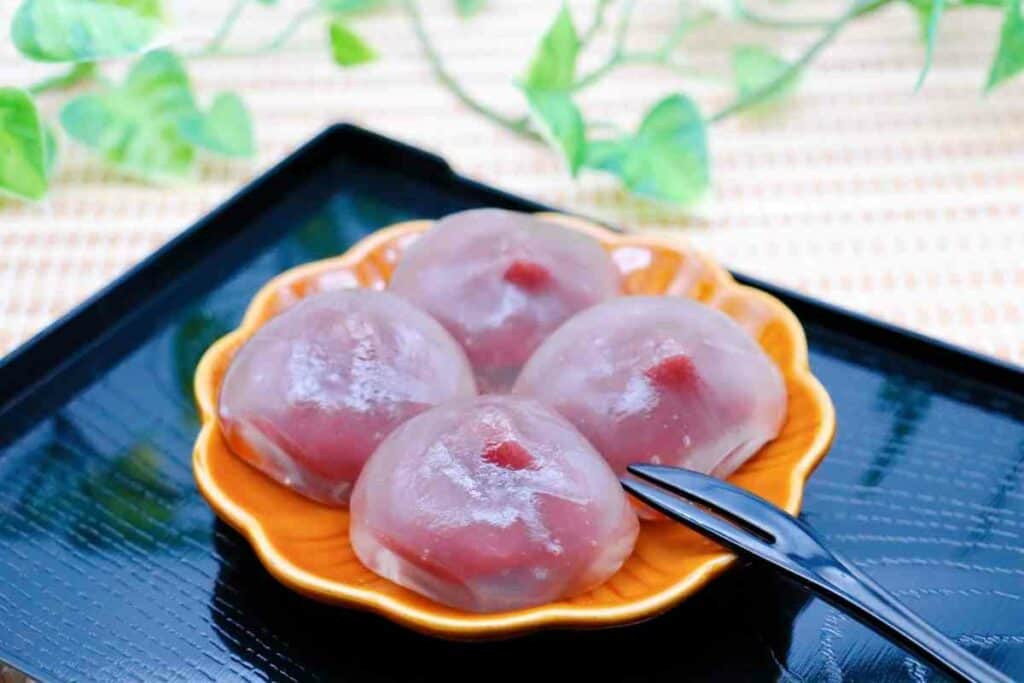
Commonly served in the summertime, kuzumochi is formed using arrowroot starch. Popular toppings include red bean paste.
Hishimochi
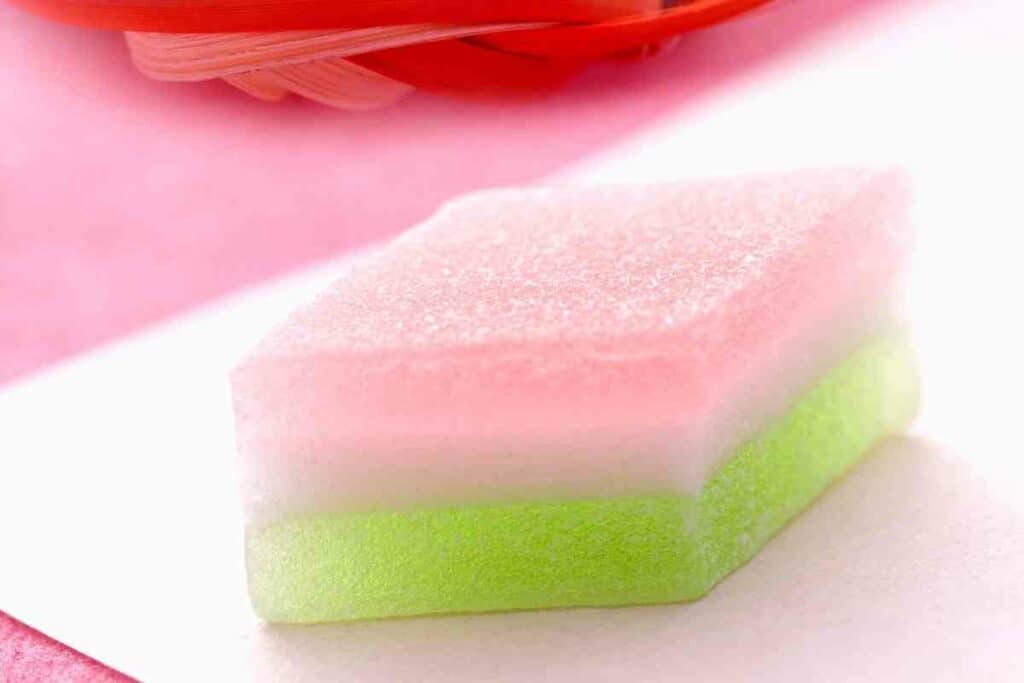
These tasty, sweet treats are symbolic of fertility, good health and longevity. They are often shaped like diamonds and are colorfully layered inside.
Tapioca Flour Substitutes
If you do not want to use this type of flour, you’ll be glad to know there are a couple of other substitutes you may want to use.
Potato Starch
Obviously, potato starch comes from the good old potato. It is often used in soup dishes as a thickener and in baked goods.
One advantage of using this type of flour is that it is not affected by a change in temperature and isn’t as sticky as others.
Arrowroot powder
Another great alternative derives from the arrowroot plant located in West Africa.
This flavorless powder is a thickening agent used in desserts.
It adds a finishing gloss to sweet foods like:
- fruit pies
- custards
- and puddings
How To Make Mochi
This dish is pretty straightforward, and you can’t really go wrong when it comes to making mochi.
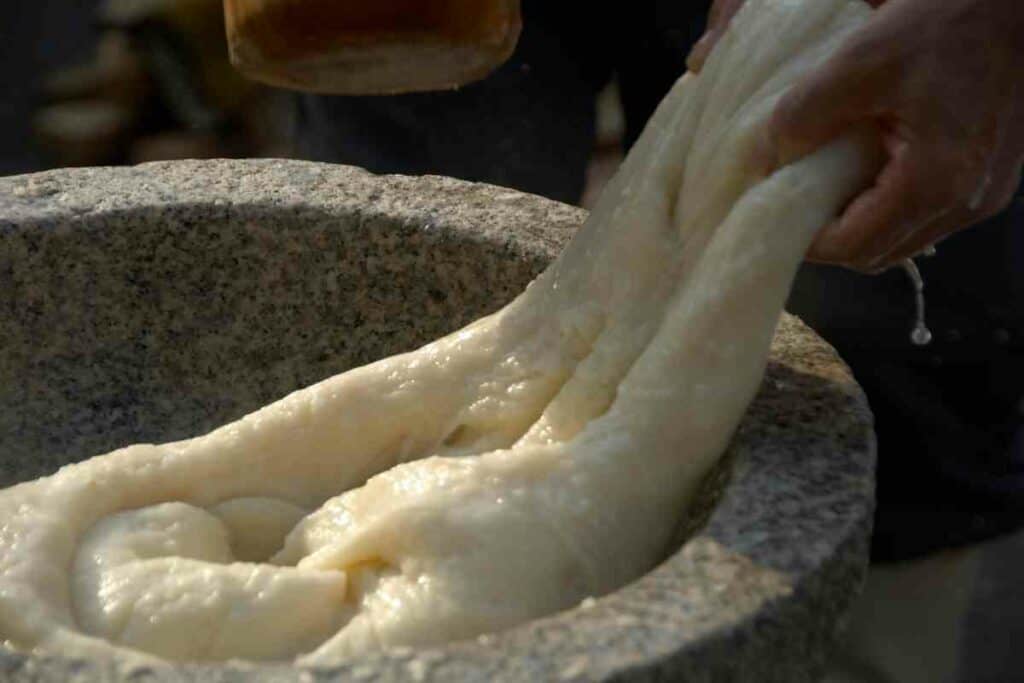
One small piece of advice is to continuously stir the mixture without overdoing it.
Otherwise, you will end up with a burnt ball of gloop!
Read on to find out how to make the perfect mochi.
You will need:
- 70g tapioca flour
- 150ml water
- 60g sugar
- Toppings (brown sugar, kinako, coconut milk, jam)
Method:
- In a pan, combine the flour, water and sugar until the flour has dissolved. Then bring to a medium heat.
- Stir the ingredients regularly until it becomes glue-like in consistency. Do not let the mixture come to a boil.
- Knead the mixture for 5 minutes with a silicone spatula. To do this, you will need to lower the heat or take the pan off it completely. This reduces the chance of burning.
- Once the dough becomes translucent and elastic in consistency, form into a ball and transfer to ice water. Once it is submerged, you can flatten the dough to cool it quicker.
- With clean hands, tear off small pieces and form into balls using the palm of your hand. Place each individual ball into the ice water.
- Once cooled, drain the pieces into a strainer and get ready for the fun part – adding toppings of your choice!
Where Can You Buy It?
You can purchase this starchy substitute from health food stores, or there is a small chance your local grocery store may have some in stock.
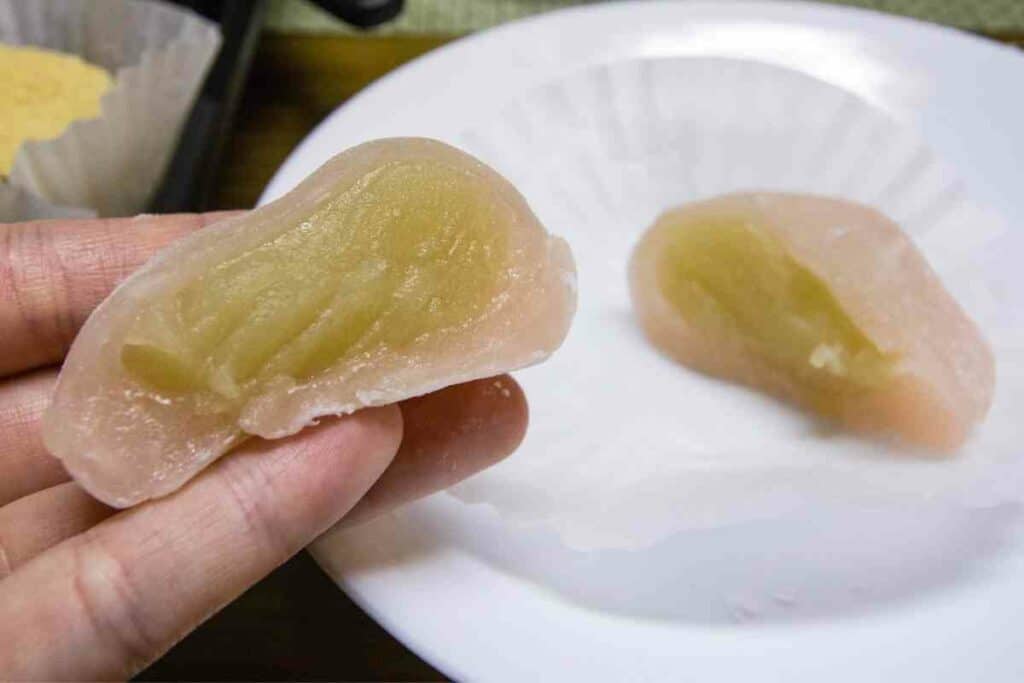
It just depends how much demand there is for this particular product.
For peace of mind, you might be best placing an online order from Amazon or Real Foods.
To Conclude
So there you have it. Making mochi with tapioca flour is a good gluten-free alternative if, like many people around the world, you suffer from allergies.
This easy to make sweet treat is the perfect rainy-day activity, or maybe you just want to appreciate Japanese culture.
You can even get creative and experiment with weird and wonderful toppings!
Posts You Might Like
- Japanese Traditional Sweets (Wagashi): A Guide to Their Origins and Varieties
- A Taste of Japan in Every Bite – Japanese Candy & Snack Box Review
- Bubble Tea vs Boba Compared: What’s the Difference?
- Best Izakaya Foods for a Relaxed Night Out (My Top 10 Picks)
- Edo Kiriko Whiskey Glasses (Japanese Heritage in Every Pour)
- Japanese Viral Foods on Social Media (Discover the Top 10)

